THE CONVERSATION
Global warming putting world’s biggest ice sheet at greater risk than scientists previously thought
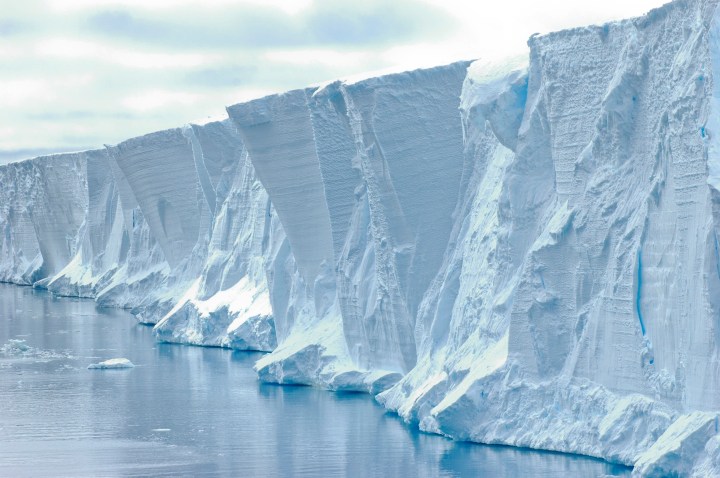
Nearly 70% of the Earth’s fresh water is frozen in vast continental ice sheets that cover Greenland and Antarctica which together store the equivalent of about 65 metres of sea level rise.
The eastern two-thirds of Antarctica is covered by an ice sheet so large that if it melted the sea would rise by 52 metres. Most scientists had once thought this ice sheet was largely invulnerable to climate change, but not anymore. And our new research, published in Nature, reveals the dire consequences if we were to awaken Antarctica’s sleeping giant.
Almost 70% of the Earth’s fresh water is frozen in vast continental ice sheets that cover Greenland and Antarctica. Together, they store the equivalent of around 65 metres of sea level rise. Hence, even relatively small changes in the volume of these remote polar ice sheets will have a global impact. An estimated 1 billion people live within 10 metres of sea level, including 230 million within 1 metre.
Scientists measure changes in the volume of these ice sheets by estimating the mass input, mostly via snowfall, and the mass output, mostly melting snow and ice along with icebergs that break off and float away. The difference between input and output is known as the ice sheet’s “mass balance”, which is highly sensitive to climate change.
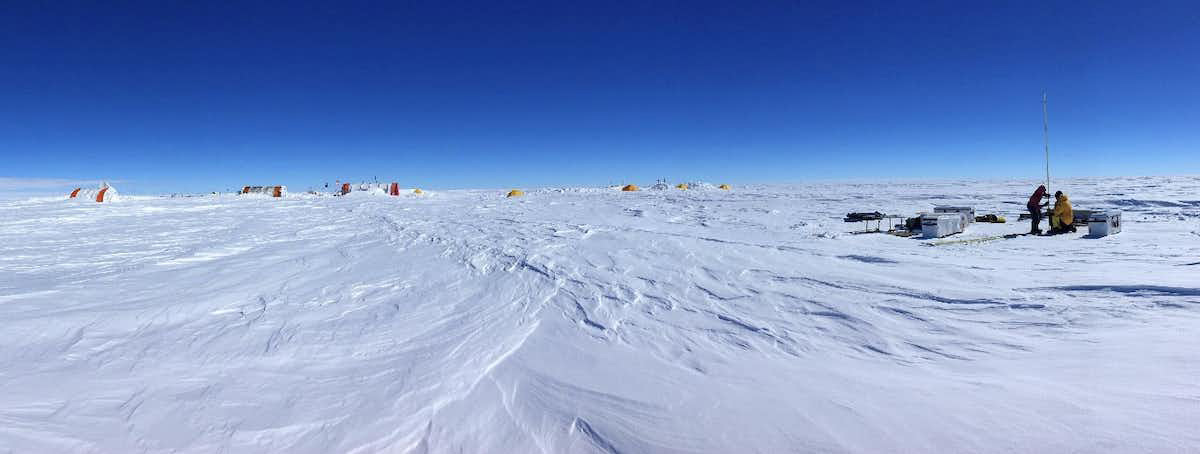
A field camp on the surface of the East Antarctic Ice Sheet. (Photo: Nerilie Abram, Author provided)
The most recent efforts to measure ice sheet mass balance paint a very worrying picture. The Greenland Ice Sheet, which contains around 7.4 metres of sea level rise, lost 3,900 billion tonnes of ice between 1992 and 2018, causing global sea level to increase by 11 millimetres over this period. A similar story emerges from the western part of Antarctica, known as the West Antarctic Ice Sheet. It holds around 5.3 metres of sea level and lost more than 2,000 billion tonnes of ice between 1992 and 2017, adding around 6 mm to the sea level.
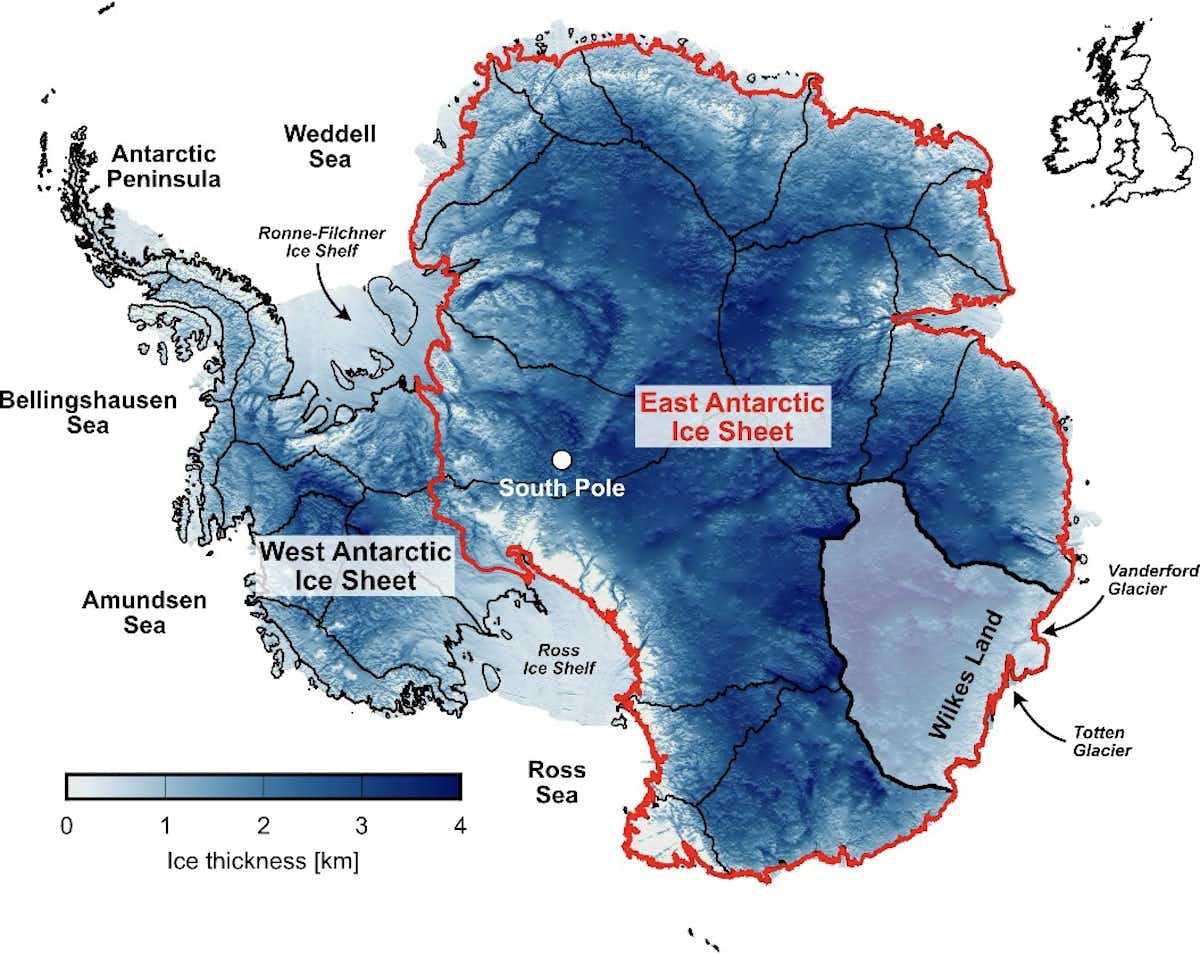
Thickness of ice in Antarctica (UK and Ireland shown for scale). Data: Morlighem et al. (2020; Nature Geoscience) (Photo: Guy Paxman, Author provided)
More sensitive than we thought
Perhaps surprisingly, much less work has focused on the East Antarctic Ice Sheet, which is by far the world’s largest but was thought to be a lot less vulnerable to global warming. This is because large parts of the ice sheet have persisted through “natural” climate changes across millions of years, and because recent measurements indicate that it has been in equilibrium or has maybe even gained mass (a warmer atmosphere can hold more moisture, which means more snow). In fact, the ice sheet may have even slightly reduced sea level rise over the past century.
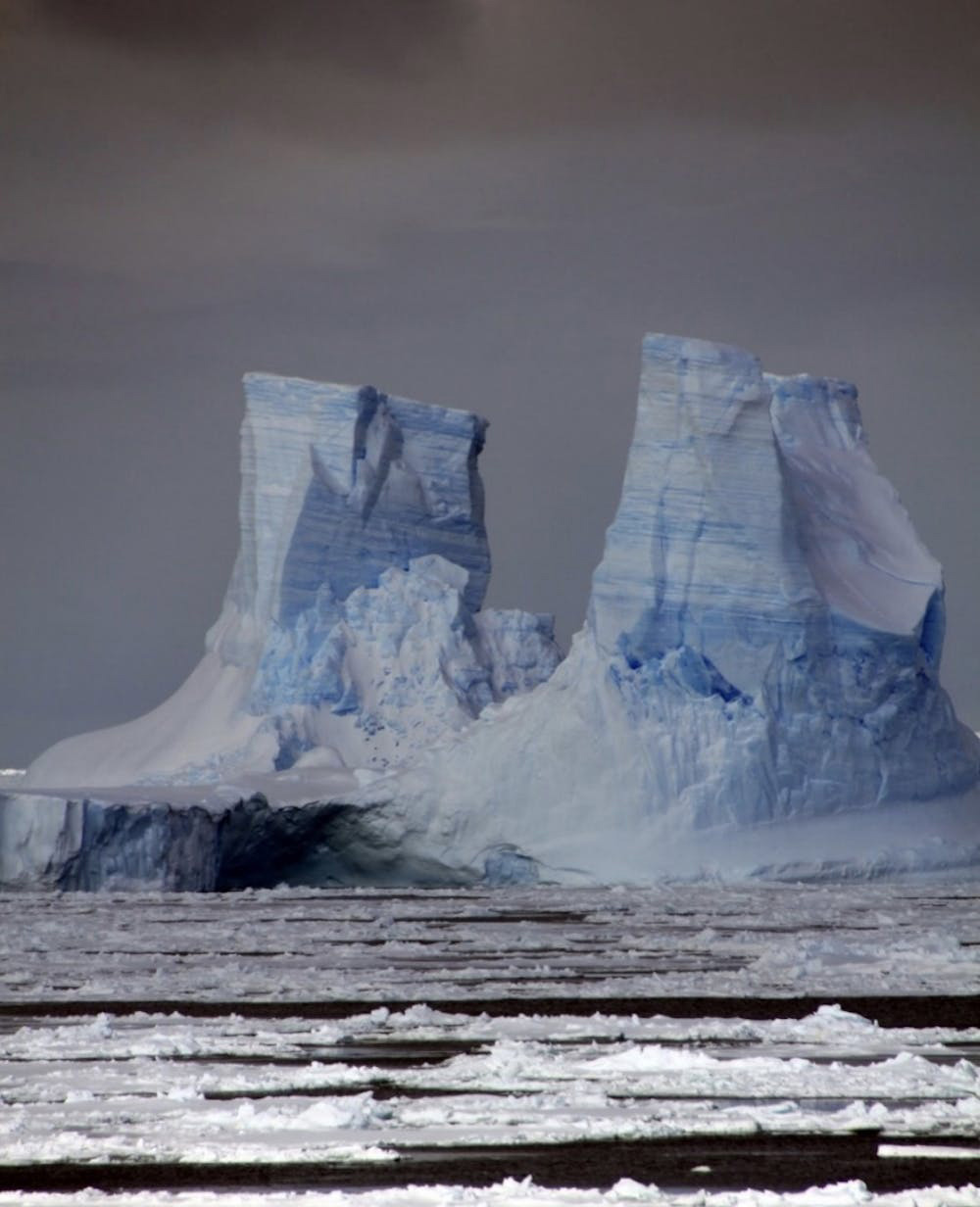
Iceberg towers that have broken off from the East Antarctic Ice Sheet. (Photo: Nerilie Abram, Author provided)
However, over the past two decades or so, observations suggest that the East Antarctic Ice Sheet may be far more sensitive to climate warming than previously thought. Major outlet glaciers like the Totten and Vanderford are thinning and retreating. And there are clear signals of mass loss in Wilkes Land, the ice sheet’s “weak underbelly”, so-called because it rests on “land” that lies well below sea-level and so is particularly unstable.
Lessons from the past
There is also evidence that parts of East Antarctica retreated quite dramatically during warm periods in the past, when carbon dioxide concentrations and atmospheric temperatures were only slightly higher than present.
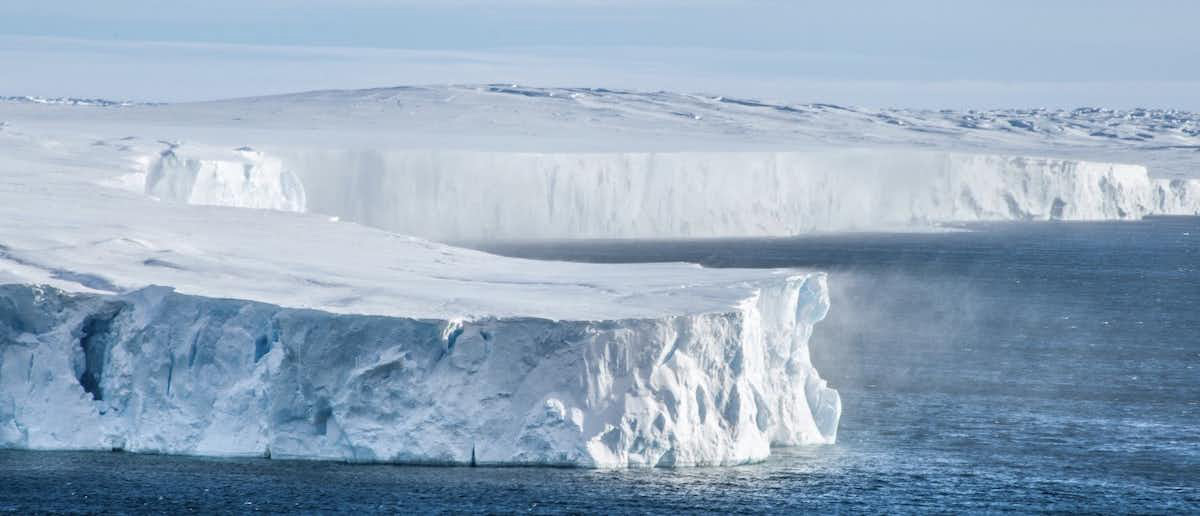
The edge of Vanderford Glacier, one of the major outlet glaciers that appears to be thinning and retreating in Wilkes Land, East Antarctica. (Photo: Richard Jones, Author provided)
It is likely that East Antarctica contributed several metres to global sea level during the mid-Pliocene warm period, around 3 million years ago, with ice loss concentrated in Wilkes Land. Recent work has also suggested that ice in Wilkes Land retreated 700km inland from its present position around 400,000 years ago, when global temperatures were only 1 or 2℃ higher than present. A key lesson from the past, therefore, is that the East Antarctic Ice Sheet is highly sensitive to relatively modest warming, even if it is currently stable.
Visit Daily Maverick’s home page for more news, analysis and investigations
Don’t wake a sleeping giant
So what will actually happen over the next few decades and centuries? We recently analysed projections from various computer simulations to answer this question. Our results were alarming, but also offered some encouragement.
We found the ice sheet will probably remain broadly in balance in the short term because any mass loss due to global warming will be offset by increased snowfall. Although there are large uncertainties, we concluded that the ice sheet will only raise the sea level by about 2cm by the year 2100, which is much less than the contribution projected from melting ice in Greenland or West Antarctica.
Over the next few centuries, however, the sea-level contribution from East Antarctica will depend critically on whether we manage to curb our emissions. If warming continues beyond 2100, sustained by high emissions, then East Antarctica could contribute around 1 to 3 metres by 2300 and around 2 to 5 metres by 2500, adding to the substantial contributions from Greenland and West Antarctica and threatening millions of people who inhabit coastal areas.
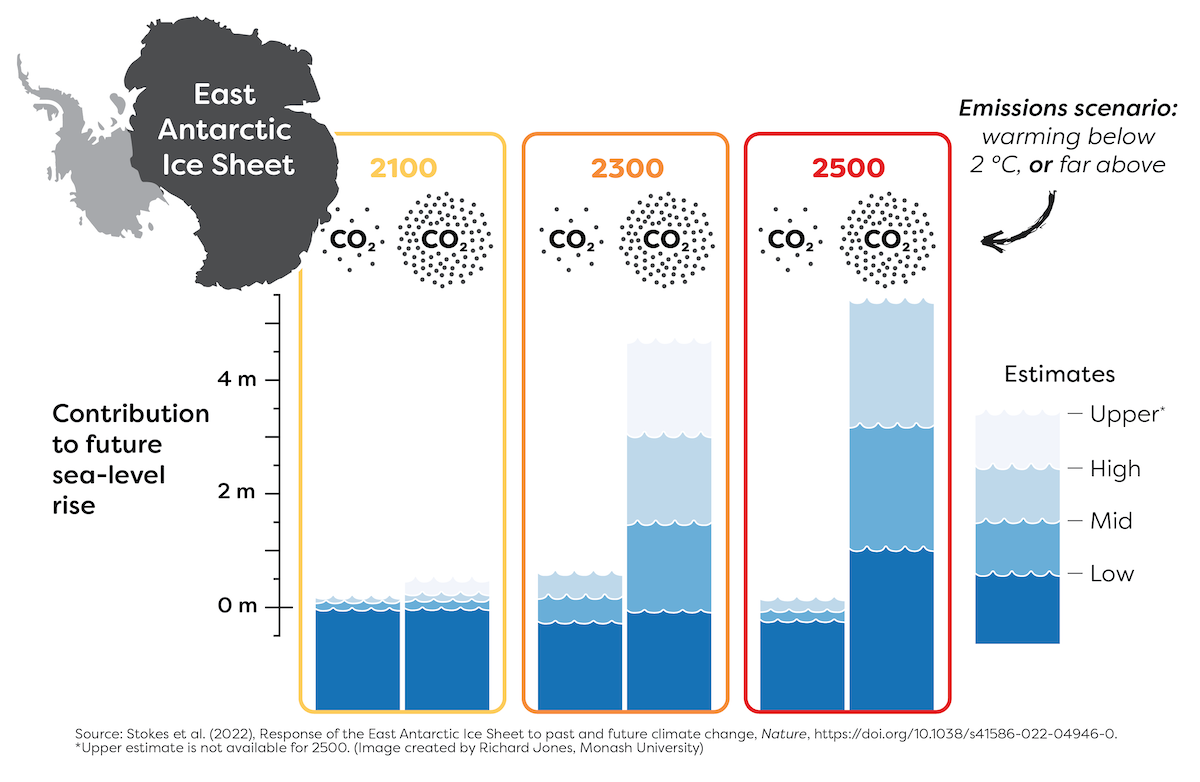
How much the sea would rise thanks to melting water from the Each Antarctic Ice Sheet if warming was kept below 2C (left column in each year) and in an extreme warming scenario (right). (Graphic: Richard Jones, Monash University, Author provided)
Crucially, however, our analysis suggests that if the Paris Agreement to limit warming to well below 2℃ is satisfied, then East Antarctica’s sea-level contribution would remain below 0.5 metres, even five centuries from now.
The fate of the world’s largest ice sheet remains in our hands. DM
Chris Stokes is Professor in the Department of Geography, Durham University.
Guy Paxman is Assistant Professor (Research), Department of Geography, Durham University.
First published by The Conversation.




















 Become an Insider
Become an Insider
On the issue of Anthropogenic climate change, scientists are saying that the only targets for carbon reduction that can swing this temperature “ship” around are the targets set by groups like the Extinction Rebellion.
The Conference of the Parties COP targets have been getting more in line with neo liberal extractive global economies around the world, year by year. It’s astonishing. It would appear that our global governance is unable to tear themselves from the economic cancer that eats away at our individual and environmental health, real wealth and happiness. Until civilians stand against those decision-makers, the ice will continue to calve away, sheet by sheet.